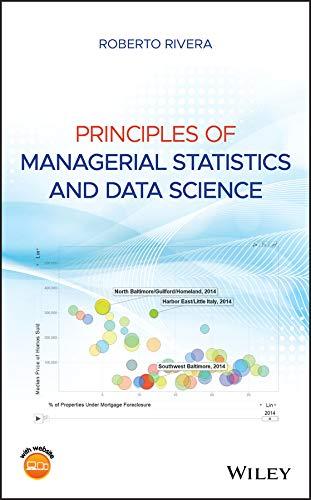In Case Study 1, it was stated that It was verified that the number of students that
Question:
In Case Study 1, it was stated that “It was verified that the number of students that dropped the course or stopped attending class for both groups were similar. ”Why do you think it is necessary to check this condition?
Case Study 1
A professor wants to answer the following question: Do quizzes help business undergraduate students get a better grade in their introductory statistics course? In academia, it is often simply assumed that quizzes will force students to study, leading to better course grades. The goal here is to answer the question based on evidence. There are two possible answers:
• They do not work: No difference between grades of students who took quizzes and students who did not take quizzes, or students who took quizzes perform worse.
• They do work: Grades of students who took quizzes are better than students who did not take quizzes.
Next is to determine how the comparison will be made. More specifically, what aspects associated with students will be taken into account? Hours of study per week, undergrad concentration, high school they went to, and the education level of parents are just some examples of “variables” that could be considered. Yet, the simplest way to make the comparison is based on two groups
of students:
• One group that took quizzes during the course.
• The other group that did not take quizzes during the course.
Then, it is assumed that both groups are homogeneous in all their attributes, except that one group of students took the course with quizzes, while the other did not. This way, the average exam scores of both groups can be compared.
To compare average exam scores, two semesters were selected: one with quizzes and the other without. It was verified that the number of students that dropped the course or stopped attending class for both groups was similar (why do you think it is necessary to check this?).
• The group that took quizzes had an average test score of 79.95.
• The average of the group that had no quizzes was 75.54.
Now, these averages are just estimates, and different semesters will have different students in each group leading to new average values. This leads to uncertainty. Informally, what is known as statistical inference accounts for this uncertainty. When the inferential procedure was implemented, it was found that in reality there was no difference in average exam score among the two groups. Thus, there was no evidence that quizzes helped students improve their test scores.
Now, let’s not get too excited about this. The interpretation is that quizzes do not help improve the performance of students who take the class with that professor. The conclusion does not necessarily extend to quizzes in other subjects, and it doesn’t even necessarily extend to all introductory business statistics courses.
Step by Step Answer:

Principles Of Managerial Statistics And Data Science
ISBN: 9781119486411
1st Edition
Authors: Roberto Rivera





